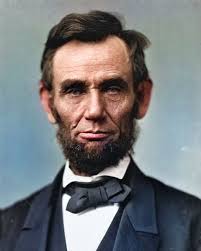I’ve gotten many requests to speak about personal branding lately as I routinely lecture to university and grad students. As part of my due diligence, I researched the prevailing wisdom on the web and discovered some horribly misleading advice that bears amending. Whether you are, or want to become, a business professional, media personality, artist, or the owner of a self-named company, here’s a quick review of the fake news–with fact-checking corrections.
Fake news: Personal branding starts with you. It doesn’t. It starts with the people you hope to influence. Regardless of your self-esteem, you are what people think of you. So, begin with the end in mind. Study the people you wish to impress. What qualities do they admire: Reliability? Innovation? Dressing sharply? Why does it matter to them? How can you make them look good? If you can answer these questions, then you’ve just created the bulls-eye for your target.
Fake news: Personal branding demands that you become someone you’re not. That would be a disaster. People know an imposter when they see one. You’d lose the very respect you’re seeking. Your personal brand should preserve authenticity, and dial up what makes you special in the eyes of your beholder. You want to reflect their bulls-eye values, but avoid becoming a funhouse mirror. Stay true to yourself.
(Honest Abe)  Fake news: Personal branding is all about image. When most people think about branding, they envision colors and shapes and symbols. This makes sense. Color is the first thing we notice, followed by shape. Think stop sign. However, the way people judge brands the most is behavioral–what brands say and do. Product performance is paramount in consumer goods, as well as sponsorships. Nike supports college and professional sports. Heineken stickers grace the body of a Formula 1 racer. Of course, behavior is essential when it comes to service brands. How store employees greet you as you enter, or the view out your hotel window reinforce this intangible brand quality. (Ritz Carlton always features a stunning panorama, locating near or on city icons, like the Statue of Liberty in New York City.) For personal brands, clothing style, haircut, and accessories can reinforce your identity, but being courteous, funny, and honest, for example, give off the vibe that matters. So, take actions, such as, regularly going to a sporting event or the experience you project on social media. In other words, don’t just look the look, also walk the walk.
Fake news: Personal branding is all about image. When most people think about branding, they envision colors and shapes and symbols. This makes sense. Color is the first thing we notice, followed by shape. Think stop sign. However, the way people judge brands the most is behavioral–what brands say and do. Product performance is paramount in consumer goods, as well as sponsorships. Nike supports college and professional sports. Heineken stickers grace the body of a Formula 1 racer. Of course, behavior is essential when it comes to service brands. How store employees greet you as you enter, or the view out your hotel window reinforce this intangible brand quality. (Ritz Carlton always features a stunning panorama, locating near or on city icons, like the Statue of Liberty in New York City.) For personal brands, clothing style, haircut, and accessories can reinforce your identity, but being courteous, funny, and honest, for example, give off the vibe that matters. So, take actions, such as, regularly going to a sporting event or the experience you project on social media. In other words, don’t just look the look, also walk the walk.
Fake news: Personal branding is a mystical experience that warrants meditation and anguish in finding the right strategy. Ha! Personal branding is an established discipline. It follows the protocols of branding any type of product or service. It’s like working out at the gym: there’s a right and wrong way to lift weights, do yoga, or any type of exercise designed to keep you fit. It’s not mystical at all.
Do your discovery research, build your strategy and let that strategy guide the choices that you make. You’ll be on the right road to create a unique and impactful personal brand.
